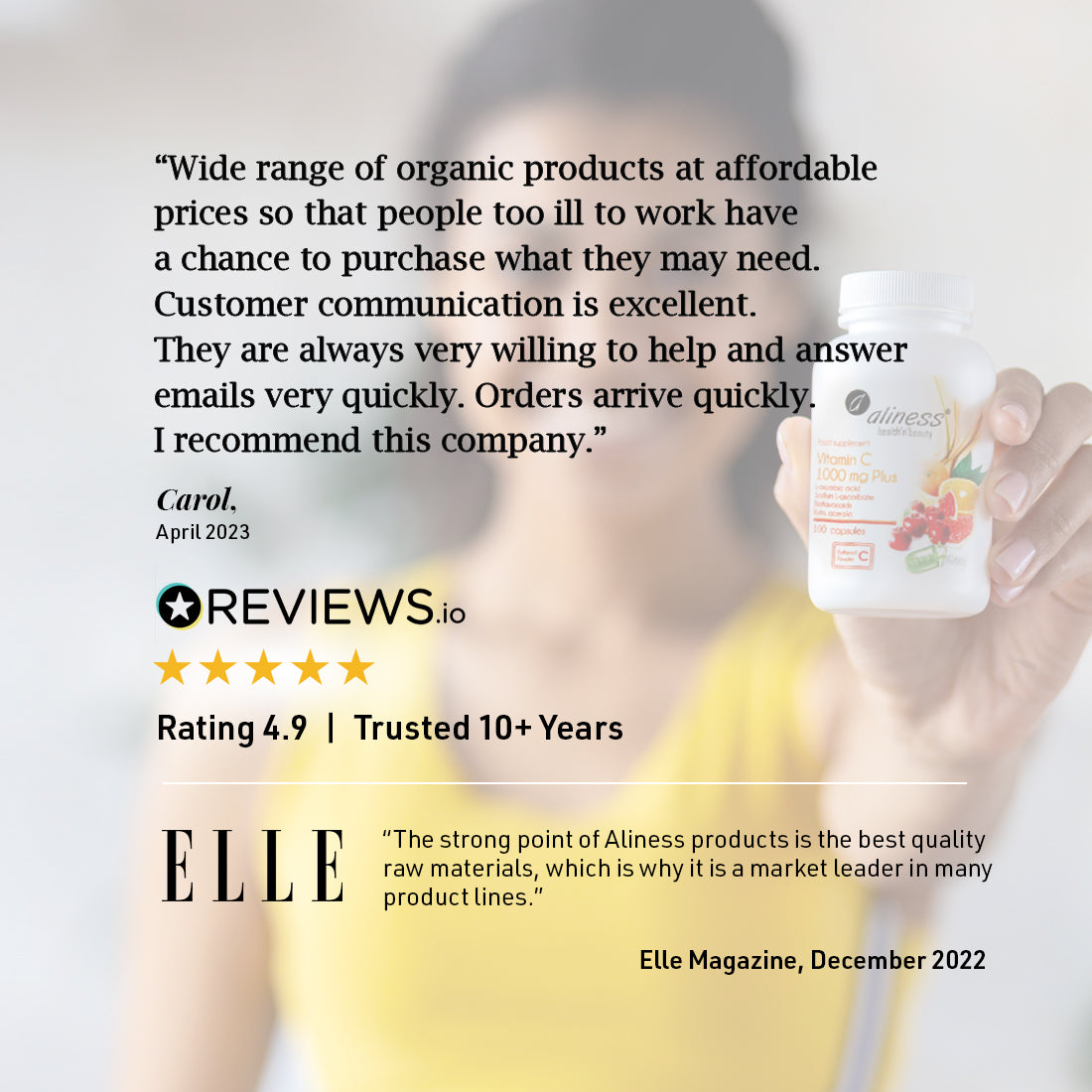As seen in
- See more:
- Fish Oils and Omega 3
Aliness
Fish Omega 3 Triglycerides 180 mg EPA, 120mg DHA, 60 capsules
Fish Omega 3 Triglycerides 180 mg EPA, 120mg DHA, 60 capsules
- ✓ Highest quality supplements manufactured to top EU standards
- ✓ Free from traces of allergens




Low UK stock, Next Day Delivery Available
Couldn't load pickup availability
- Same day dispatch from the UK Warehouse (up to 1pm Mon-Fri). Now also shipping to the EU and North America.
- No quibble 90 day FREE returns
- UK's largest stock of Aliness products in our Oxfordshire warehouse. We deliver the products faster than anybody else in the UK. Buy with confidence that you won't pay any duty or extra import tax.
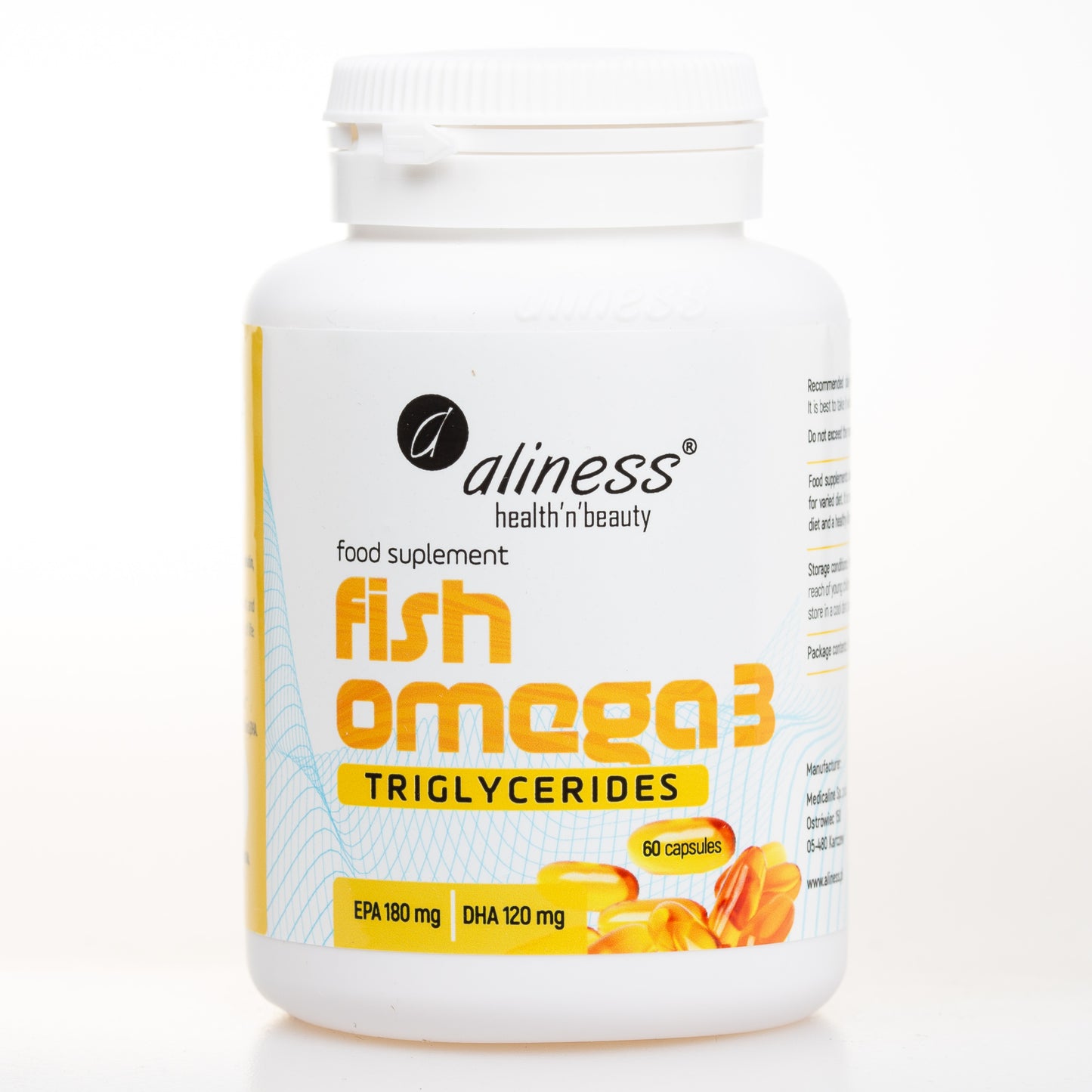
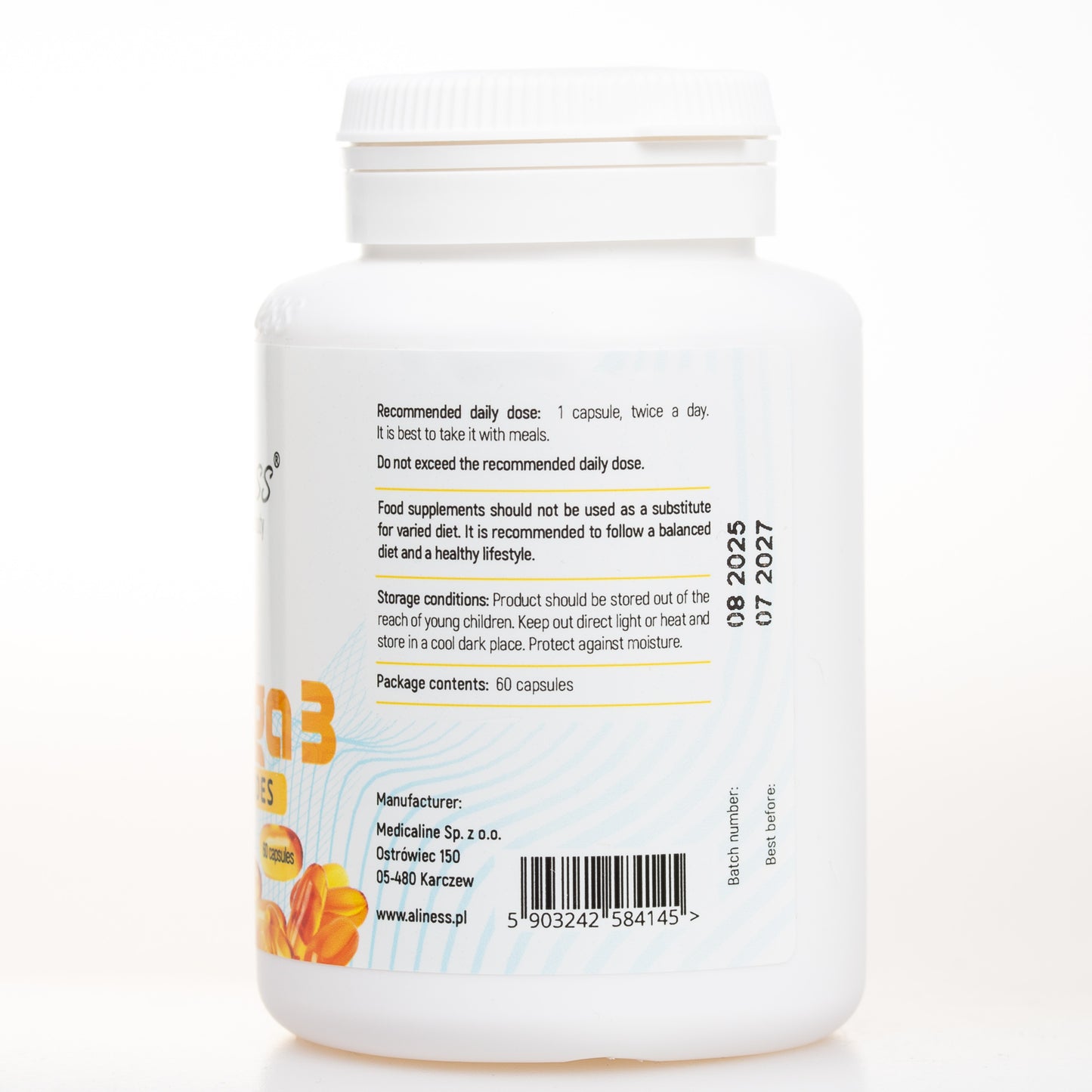
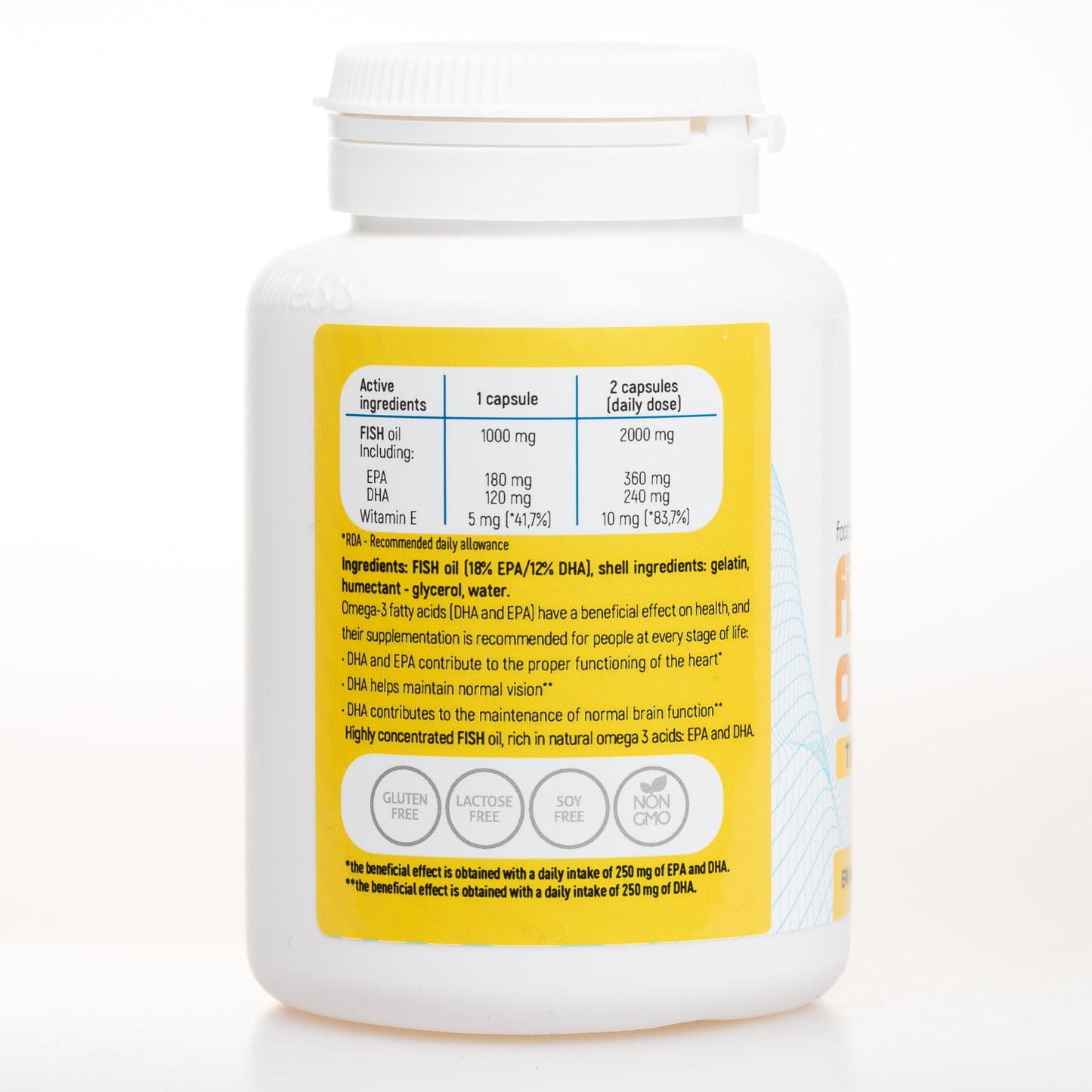
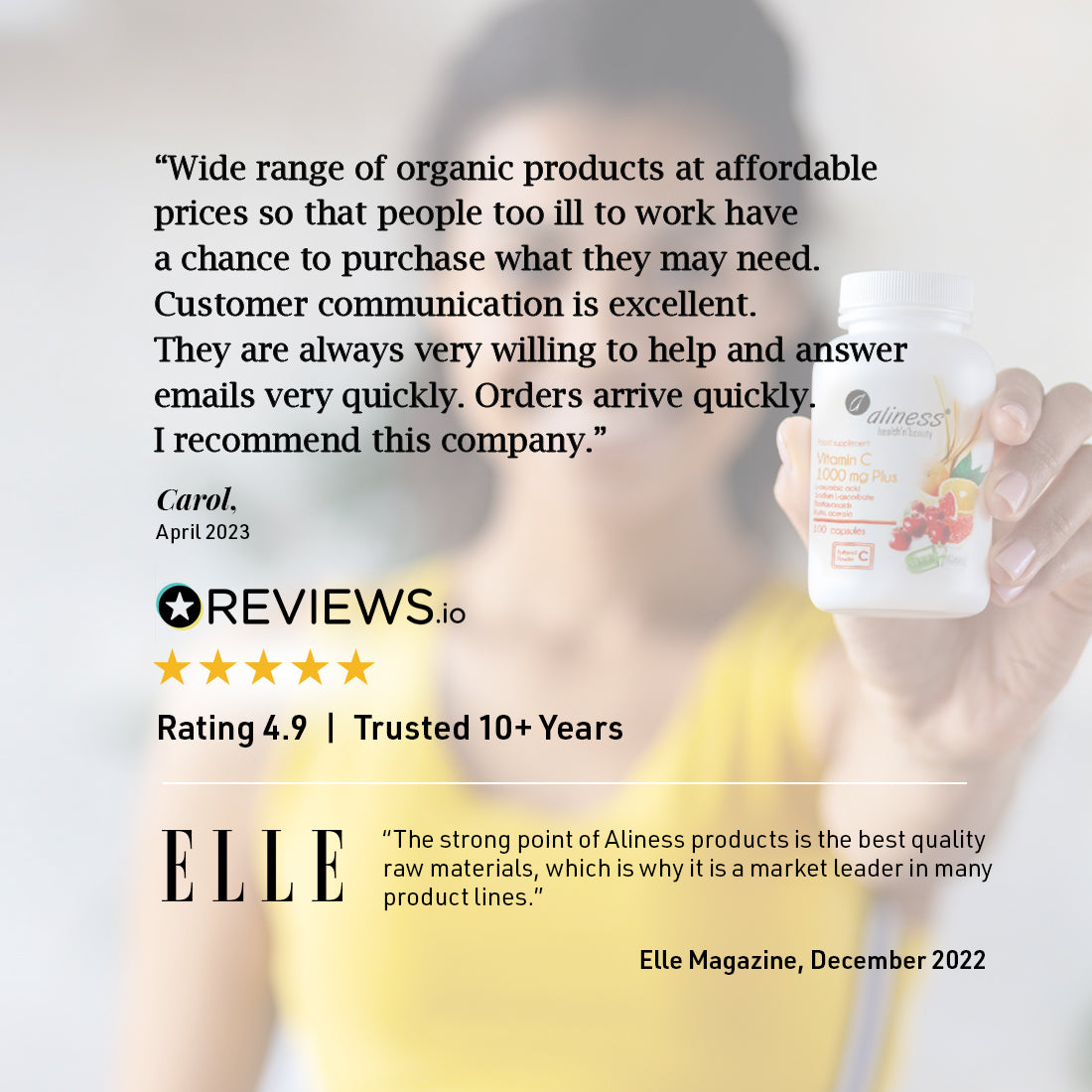
Join Our 40,000 Happy Customers
Rated Excellent 4.8/5
⭐⭐⭐⭐⭐
"I love Aliness products. Very high quality. I'm working as a personal trainer and when I write diet and supplementation plans for my clients, I base them on Aliness supplements. I know it works, as I have blood tests results. Top quality. Thank you. "
- Agata
Description
- Food supplement
- 60 capsules
- EPA 180 mg
- DHA 120 mg
- Gluten Free
- Lactose Free
- Soy Free
- GMO Free
- Fish Triglycerides :13.3 TOTOX.
Highly concentrated fish oil, rich in natural omega-3 fatty acids: EPA and DHA.
|
Ingredients |
1 capsule |
2 capsules (daily dose) |
|
Fish oil |
1000 mg |
2000 mg |
|
Including: |
|
|
|
EPA |
180 mg |
360 mg |
|
DHA |
120 mg |
240 mg |
Ingredients: FISH oil (18% EPA/12% DHA), shell ingredients: gelatine, humectant - glycerol, water.
Recommended daily dose: 1 capsule, twice daily. Best taken with meals. Do not exceed the recommended daily dose.
This product should not be used as a substitute for a varied diet. A balanced diet and a healthy lifestyle are recommended.
Package contents: 60 capsules.
Storage conditions: Store at room temperature, out of reach of children. Protect from moisture.
Omega 3 acids triglycerides or esters?
The difference between triglycerides and omega esters results from their chemical structure and bioavailability, which affects the way the body absorbs and uses them.
Choosing the right form of omega-3 supplementation (TG or EE) depends on individual needs, price, and availability of the raw material. Triglycerides are the natural form, more easily absorbed and highly bioavailable, but more expensive and less commercially available. Ethyl esters are the processed form (more available and popular on the market), readily used due to their ability to obtain high concentrations of omega-3 fatty acids.
Triglycerides (TG)
Triglycerides are compounds in which three fatty acid molecules (e.g., omega-3) are attached to a single glycerol molecule. They occur naturally in most fats and oils of plant and animal origin (e.g., fish). Triglycerides are readily recognized by digestive enzymes (lipases), making their absorption by the body very efficient. After digestion, the fatty acids are released from glycerol, allowing them to be used as an energy source or building material.
Aliness Fish Omega-3 Triglycerides is a source of omega-3 fatty acids, in an accessible soft gel form. The main ingredient is high-quality fish oil, which is characterized by a high concentration of omega-3 fatty acids.Omega-3: EPA (quash eicosapentaenoy) and DHA (quash docosahexaenoy) in the form of triglycerides.
Each capsule Fish Omega-3 Triglycerides provides up to 300 mg of essential fatty acids
omega-3, including 180 mg EPA and 120 mg DHA.
What are omega-3 fatty acids?
OMEGA-3 acids are a common name for a group of compounds belonging to the essential fatty acids (EFAs).
Omega-3 fatty acids are…
ESSENTIAL– because unlike saturated fatty acids, the body is not able to produce them, and they are needed at many levels of our functioning. Therefore, they must be supplied in adequate amounts in our diet.
UNSATURATED– meaning that these acids contain at least one double bond between carbon atoms in the carbon chain. The suffix '3' indicates that the last such double bond is located at the third carbon atom from the end of the chain.
The three main OMEGA-3 acids that play the most important role in healthy eating are:
OMEGA-3 or OMEGA-6?
Providing both omega-3 and omega-6 fatty acids is crucial for the proper functioning of the body. However, because the metabolism of omega-3 (omega-3) and omega-6 (omega-6) fatty acids in the human body depends on the same enzymes, it is crucial to maintain a proper ratio of them in the diet. Excessive dietary intake of linoleic acid (a precursor of the omega-6 family) inhibits the synthesis of EPA and DHA (n-3 family) and exacerbates their secondary deficiency. The optimal omega-3 to omega-6 ratio is 1:4-5.
In the daily diet of an average European, the proportion differs significantly from the correct one and is 1:15-20, therefore in many cases supplementation of omega-3 acids is recommended.
Omega-3 fatty acids (DHA and EPA) have a beneficial effect on health, and their supplementation is recommended for people at every stage of life:
-
DHA and EPA contribute to the normal functioning of the heart*
-
DHA helps maintain normal vision**
-
DHA contributes to maintaining normal brain function**
*the beneficial effect is obtained with a daily intake of 250 mg of EPA and DHA.
**the beneficial effect is obtained with a daily intake of 250 mg of DHA.

“The strong point of Aliness products is the best quality raw materials, which is why it is a market leader in many product lines.”
Elle Magazine, December 2022





